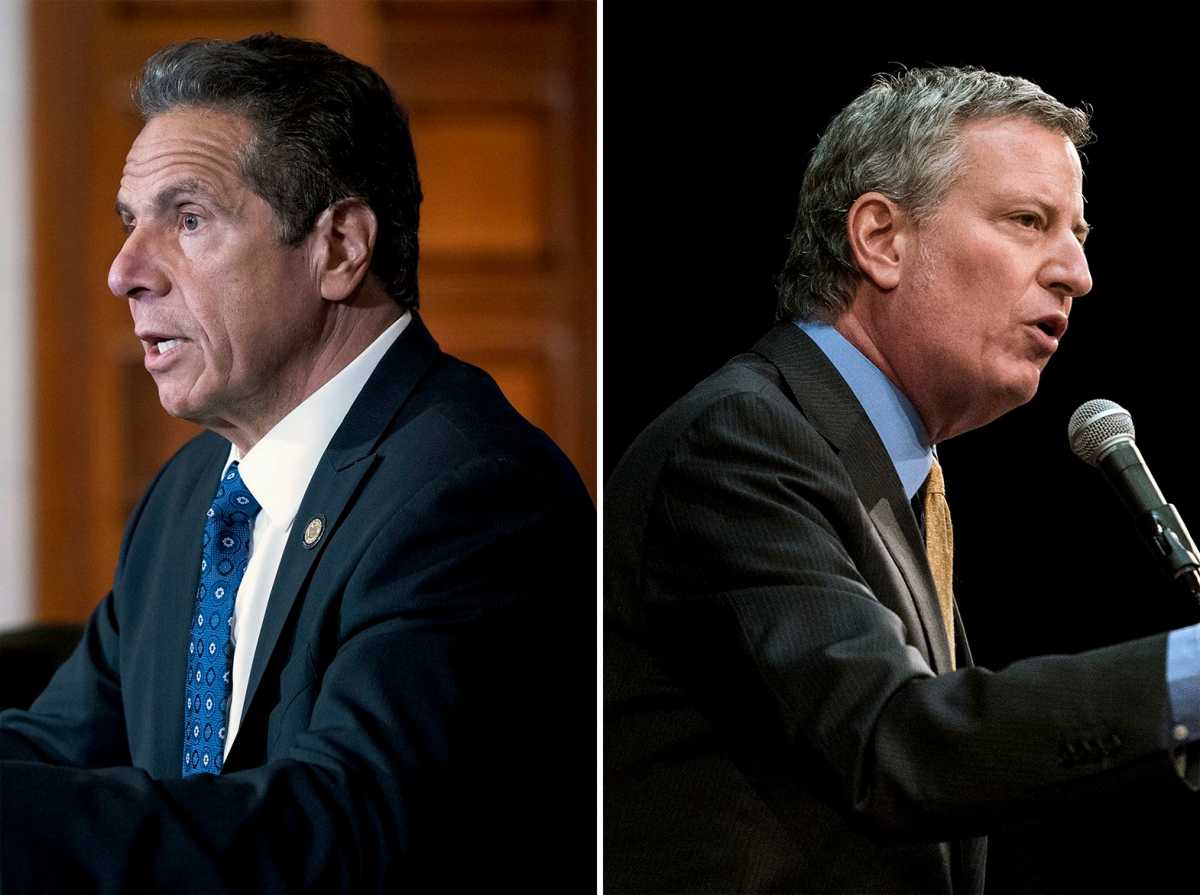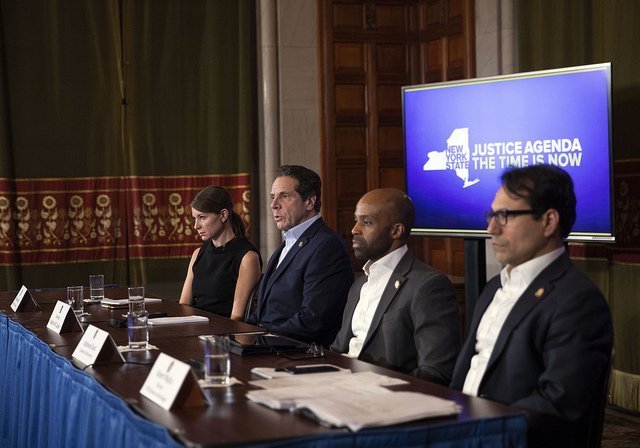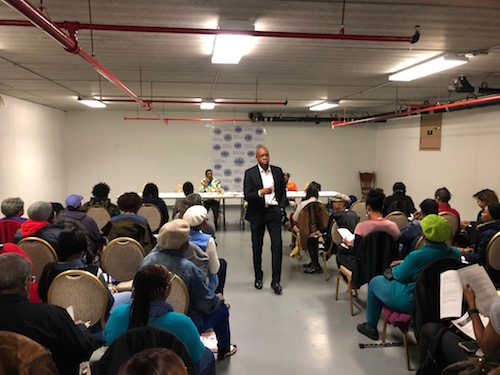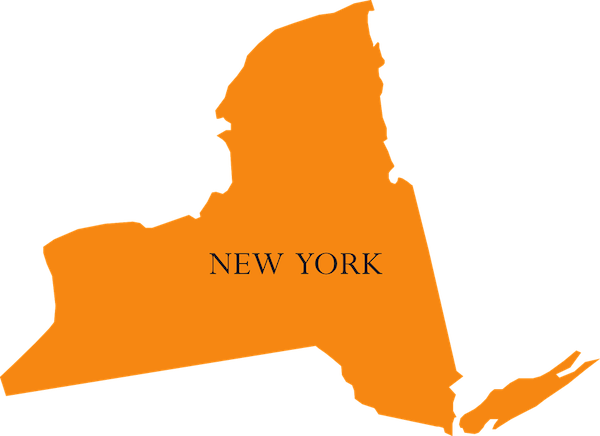Mayor Bill de Blasio and Governor Andrew Cuomo’s newly released preliminary budgets for the city and state are at odds once again over funding.
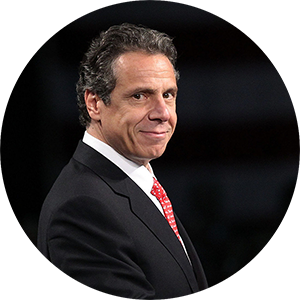

But one thing remains the same. Despite the state’s falling revenues, both de Blasio and Cuomo are calling for healthy spending increases without releasing any clear cut plans on how to keep existing big and small business thriving or how to attract the businesses heading to places like Texas and Florida.
The city’s Preliminary Budget for Fiscal Year 2022 (FY22) is $92.3 billion or a $4.1 billion increase over last year’s $88.2 billion city spending plan.
Meanwhile, the state’s Executive Budget is estimated at $193 billion that seems to exclusively hinge on receiving a promised $15 billion in federal aid from the incoming Biden-Harris administration in a timely fashion. Last year’s state spending plan was $177 billion.
“After one of the most painful years in our city’s history, this budget puts us on a path to recovery while making responsible choices in light of steep revenue losses due to COVID-19,” said de Blasio. “President-elect Biden will help our recovery by increasing FEMA reimbursement, and new Democratic majorities in Congress must move us forward with a federal COVID relief package that includes direct local aid.”
Cuomo presented two budget options, one smooth sailing with government money and the other pretty alarming for the city. The second option, without the $15 billion in federal funding, would force the state to raise revenue, cut expenses and borrow, said Cuomo. With that barely any notice has been given to parts of the state budget, such as the call to legalize cannabis for adult use, which is expected to generate more than $300 million in tax revenue.
De Blasio said that the state has threatened to cut $8 billion from localities, which could mean up to $4 billion in cuts for the city. He has vowed to fight any cuts to education, healthcare and Medicaid, and other essential agencies.
“The story of COVID has many chapters – we launched the battle last year and now we must not only finish it, but begin an aggressive post-COVID reconstruction,” said Cuomo. “We are in a different time and a different world than just one year ago and we shouldn’t be surprised that this budget will look different. We have a plan in place, a strength that we have not had before and I believe our future is bright, but Washington must act fairly if we are to emerge on the other side of this crisis.”
Cuomo also called the State and Local Tax (SALT) cap harmful and said it costs the average household $2,600 per home. The city has suffered a $10.5 billion drop in its tax revenue and property tax revenue declined by $2.5 billion dollars because of a reduction in assessed property values, said de Blasio.
“We need SALT repealed and $15 billion in rightfully deserved federal aid – and we need it now. After years of federal hostility, I believe the stars are lined up for that to change – we just need to do it. We built the greatest state once before and I know that we will do it again,” said Cuomo.
Here’s a breakdown of where the city’s money will be going:
- Stop COVID with Test & Trace Corps: $200 million in FY21
- Learning Bridges for students in hybrid learning: $62 million in FY21
- Ensuring no New Yorker goes hungry by providing food relief through GetFood NYC: $52 million in FY21
- Social and emotional learning for our students: $35 million in FY22
- Continue the expansion of WiFi in shelters: $14M in FY21, $3 million in FY22
- Extra resources for answering 311 calls when traffic is high due to COVID-19: $10 million in FY21 and $10 million in FY22.
- 70,000 slots for Summer Youth Employment: $132 million in FY22
Following the release of de Blasio’s preliminary budget for FY 2022, which included a projected $2.5 billion decline in property tax revenues, Real Estate Board of New York (REBNY) President James Whelan released the following statement:
“The City’s 2022 preliminary budget was a wake-up call as to how dire our economic situation is. Federal aid is critical and the real estate industry continues to push for it. However, it is a stopgap measure while the drop in property tax revenue will likely continue and possibly worsen.
“City and State elected officials must recognize this reality and begin to implement policies that will create good jobs and attract investment in our City, rather than make decisions that drive away jobs and investment. This crucial effort must start with immediate action to provide a better quality of life for City residents, address rising crime rates, advance land use actions that create jobs and strengthen our communities, and implement tax and spending policies that ensure New York remains a global leader and an attractive place to live and work.”
Here’s a breakdown of the state’s plans for their money (with the $15 billion in federal aid):
- Advance a $306 billion infrastructure plan and $29 billion in green economy investments, including the largest offshore wind program in the nation that’s to have a manufacturing hub at South Brooklyn Marine Terminal (SBMT) in Sunset Park.
- Enact a $1.3 billion rent relief program, fund a $20 billion program to create or preserve 100,000 affordable homes, and provide $128 million for homeless housing and assistance.
- Institute a $15 cap on broadband for low-income families, provide $150 million to address food insecurity.
- Create a $130 million Pandemic Recovery and Restoration Program to support small businesses as well as restaurant, arts and entertainment industries that were hurt by COVID. And, create a small business Return-To-Work Tax Credit, Restaurant Return-To-Work Tax Credit, and extend the Musical and Theatrical Production Credit for four years.
- Establish a $40 million Infectious Disease Resiliency Commercialization Fund to fast-track innovations and address emerging health threats.
- Set aside $7.5 billion in funding for higher education in New York, not including tuition, and provide $31.7 billion in funding for school districts through School Aid, STAR, and extraordinary federal funds, to support operational costs of school districts with an additional $4.3 billion in federal aid because of the ongoing COVID-related costs.
- Eliminate $100 million in co-payments for low-income neighborhoods and communities of color, and have a $420 million investment in rates of payments to Essential Plan health insurance providers.
[This story was originally posted on our sister site, Kings County Politics.]


